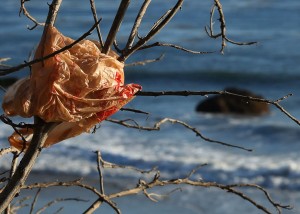Bag It gives complex topic a simple story
“Paper or plastic?”
The question seems so mundane, and yet, the answer is not as clear as it might seem.
For many, the response has become as automatic as the question is inevitable: “Plastic is fine.”
But have you ever stopped to think about what exactly happens with these plastic bags after they are thrown away? Where exactly is ‘away?’
Susan Beraza’s documentary, Bag It, holds a microscope over a part of American society that, like a bag in the wind, is often ignored.
The comical documentary, which aired last Sunday on PBS, follows Jeb Berrier, a self-proclaimed average man who would hardly consider himself a tree hugger. Yet, as a curious American, he sets out to discover the truth behind our plastic-dependent society.
His journey begins with a simple plastic bag. Berrier purchased a single yogurt contain which was then placed inside a large plastic bag upon checkout.
This small occurrence leads him to muse about the presence of plastic bags in his quiet Colorado town, which is competing with another town to see which can reduce plastic bag use the most.
By showing shots of the simple town Berrier lives in and the familiar grocery stores he shops in, Bag It’s story is relatable for the average viewer.
His journey unfolds throughout the documentary, and what he eventually finds is the use of plastic, and not just plastic bags, is seemingly inescapable and far more prevalent in society than most imagine.
Today, more than 1 million plastic bags are used every minute and 100 billion are consumed each year in the United States alone.
Though Beraza’s cinematography is not incredible, this works with the style of the documentary.

